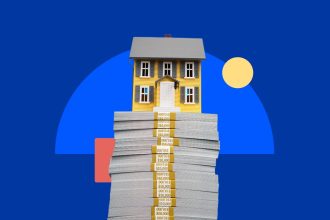Key takeaways
- Your student loans generally have to be in default to negotiate a settlement.
- Settlements usually refer to private loans, while compromise is more common with federal loans, but both involve negotiating to pay less than what you owe.
- You’ll need to start by contacting your loan servicer to see if they are open to debt settlement.
- Any settlement should be finalized in writing with clear paid-in-full terms.
- A settlement could damage your credit score and even have tax consequences.
If you have missed or are unable to make payments on your student loan debt, a student loan debt settlement or compromise may offer some relief. Eligibility generally requires nine months of missed payments, and even then, a settlement isn’t guaranteed.
Federal student loan compromise is more difficult and requires approval by government agencies. Private student loan settlements are easier since they’re negotiated directly with the lenders without the involvement of any federal government agencies.
Whether you plan to tackle this on your own or get the help of an experienced attorney or nonprofit, understanding how to negotiate federal or private student loan debt settlements could give you an idea of whether it’s a realistic relief option.
Who should consider a student loan settlement?
- Your federal student loans are 270 days past due.
- Your private student loans are 90 to 120 days late.
- Your loan is in some stage of the collection process.
- You have the cash to make a lump sum payment to settle your balance.
- You’ve received notice of a pending court judgment or garnishment action.
- You can prove you don’t have the resources (income or assets) to repay the full amount you borrowed.
- You’ve defaulted on the same loan several times.
If you find yourself in any of the scenarios above, you’ll need to take very specific steps soon to increase the odds of a successful student loan settlement.
5 Steps to negotiating student loan settlements
Once you’ve confirmed your default status with your private or federal student loan servicer you’ll need to take some steps to start the settlement process.
1. Gather required documentation
Lenders are more likely to negotiate if you’re experiencing financial hardship. Gather proof of your situation to show why you can’t repay the full amount.
This documentation might include:
- Paystubs or tax returns showing a large drop in income
- Written proof of a job termination or layoff
- Documents showing disability due to an accident or illness
- Detailed letters of explanation regarding the nature of your hardship
- Supporting letters from doctors, employers or social service agencies, if applicable
2. Have your funds ready
If you’re hoping to reduce the amount you owe by a substantial amount, make sure the money is available. Joshua Cohen is a lawyer who helps people struggling with student loan problems. He advises borrowers not to come to the table without cash in hand.
Don’t negotiate if you don’t have the money ready. I’ve seen too many people burn a bridge accepting terms they couldn’t afford.
— Joshua Cohen, student loan attorney, Cohen Consumer Law
3. Know the difference between federal and private settlement options
You have fewer settlement options for federal loans than private student loans. You’ll also need to be in full student loan default to even be considered for a federal settlement – being late on payments won’t cut it. Private student loan lenders may offer more settlement options, even if you’re not fully in default but still in collection status.
Federal student loans
Cohen says not to bother trying to set the terms of what you want to – or even think – you should have to pay. The settlement options don’t allow for any wiggle room and usually include only two choices:
- 100% principal + 50% interest
- 90% of principal and interest
Although there is a “compromise” option, Cohen said it’s usually only available in rare circumstances.
There are success stories about using the compromise provision, but those are folks who have an extreme hardship, not just ‘I can’t afford it.’
— Joshua Cohen, student loan attorney, Cohen Consumer Law
Private student loans
Settlements offered by private lenders can vary significantly. Student loan attorney Stanley Tate at Tate Law explains the factors that may influence how little or how much you could end up settling your balance.
“Older, stale debts – especially those past the statute of limitations or those previously charged off – might settle for as little as 10 to 20 cents on the dollar,” he says. “On the other hand, newer defaults, with recently charged-off loans, could require settlements closer to 60 to 70 cents on the dollar.
According to student loan attorney Adam Minsky, private lenders may offer more settlement flexibility than federal student loans.
Some private lenders are more amenable to a reduced settlement if the borrower can demonstrate hardship or other mitigating circumstances, or if the borrower has viable legal defenses to collections.
— Adam Minsky, student loan attorney, Minsky Law
4. Negotiate the terms of the settlement
You can try to negotiate directly with your lender or hire an attorney to help you. If you go it alone, explain your situation and ask open-ended questions such as, “What are my options at this point?” or “How can we settle this debt?”
Allowing the lender to make the first offer gives you the advantage since you know the starting point for negotiations. Hiring an experienced student loan attorney may give you an edge, especially if the lawyer knows how your lender’s settlement process works.
The benefit [of hiring a student loan attorney] isn’t just from their legal training – there’s surprisingly little pure ‘law’ involved in most student loan settlement negotiations. Instead, the value comes from a lawyer’s repeated experience dealing with lenders and understanding their patterns, cultures and pressure point.
— Stanley Tate, student loan attorney
5. Request a paid-in-full statement
Never make a payment until you have a written agreement that clearly outlines the terms of the settlement. This should include the amount you’re paying, the deadline for payment, as well as confirmation that the lender will consider the debt settled once payment is received.
Have a lawyer review the terms with you, and save your paid-in-full statement in case lenders or debt collectors try to request money from you later. You might also need your statement to request an update on your credit report or when filing your tax return.
How student loan debt settlement works
Not all student loan lenders are willing to entertain settlement offers, and the amount of debt that can be forgiven varies according to the lender. This is especially true when it comes to settling private vs. federal student loans.
1. Federal student loans
The government won’t settle a student loan balance unless you’re in default. Even then, settlement terms are typically not affordable. With an arsenal of collection tools that includes wage garnishment and tax refund offsets, federal loan servicers are less likely to negotiate.
According to Tate, term settlements tend to “require nearly the full principal balance, plus a substantial portion (often 50 percent) of the outstanding interest” that is due in 90 days.
When the federal government settles, the discounts are minimal, the terms strict and the repayment times very short.
— Stanley Tate, student loan attorney, Tate Law
If you qualify and can afford to repay private student loans and the lower rates they offer, Tate says using them to pay off your federal student loan balances may make some sense, but he warns against refinancing to avoid the more severe federal collection tactics since “that would be viewed as deceptive, potentially fraudulent, and [will expose] you to serious legal consequences.”
2. Private student loans
You’re likely to have much more luck negotiating a settlement with a private student loan lender because they don’t have the collection power of the federal government. They also want to provide some type of return to their investors.
If you can’t refinance or keep up with payments, Tate says you may find options with private lenders that you won’t find with federal student loan servicers. “In those situation, private lenders are frequently open to accepting less than the full balance owed, but it’s never a guarantee.”
Some attorneys have more luck negotiating private student loan settlements as part of a bankruptcy. “I can often renegotiate the terms, including dropping the interest rate to 0%, get a long-term fixed affordable payment and plan for the borrower which also protects a cosigner,” Cohen says.
Settling student loan debt: Pros and cons
Pros
- Saves money
- Gets you out of debt
- Avoids court
- Improves your credit score
Cons
- Lowers your credit score
- Reduces your available cash
- Increases potential tax liability
- Lenders may not settle at terms you can afford
4 Alternatives to student loan settlement
Before settling your student loans, try getting back on track with your payments through alternative options that may be available.
1. Deferment or forbearance
If you’re facing short-term financial hardship, deferment or forbearance can temporarily pause your loan payments, as long as your loan was, or is, taken out before July 2027.
That hardship flexibility will end for loans taken out after July 2027 as part of student loan repayment changes that went into effect as part of the passage of the One Big Beautiful Bill (OBBB). The forbearance term will also change from 12 to nine months.
2. Income-driven repayment plans
The OBBB will also see big changes for income-driven repayment (IDR) plans on student loans taken out after July 1, 2026. Only the revised standard plan and the Repayment Assistance Plan (RAP) will be available. Income-based repayment (IBR) may also be available.
Borrowers in discontinued programs will need to change to one of the available repayment programs by July 1, 2028. That would put an end to previous income-driven repayment plans, which based your payments on 10 to 20 percent of your discretionary income for 20 or 25 years of payments, after which the government would forgive the remaining balance.
3. Refinancing
If you have good credit and a stable income, refinancing your student loans with a private lender could lower your interest rate and reduce your monthly payments. Be mindful that refinancing federal loans with a private lender will mean losing access to government protections like forbearance and income-based repayment plans.
4. Federal student loan consolidation
To help lower your monthly payment and make your loans more manageable, you may be able to consolidate your federal student loans into one Direct Consolidation Loan. Keep in mind that, while this can lower your monthly payment, you will have a longer repayment term and pay more in interest over the life of the loan. To consolidate your federal student loans, they must be in repayment or in a grace period.
Student loan resources help
StudentAid.gov provides federal student loan information, including repayment options, forbearance, deferment and delinquency guidance. For help with your private student loans, reach out to your lender or servicer. Or contact an experienced student loan lawyer for a consultation.
Borrowers who are struggling to repay their student loans have several resources available. A few options include:
Bottom line
Settling your student loan debt can provide financial relief, but it may not be affordable if you have federal student loans. Private student debt settlement is typically more cost effective, but the amount private lenders are willing to settle may vary based on a variety of factors.
Even if a settlement is possible, it can negatively impact your credit and may result in tax liabilities on the forgiven amount. Before pursuing this path, it’s important to explore alternatives, such as IDR, RAP or refinancing, which could offer long-term relief without the downsides of settlement.
Frequently asked questions
Why we ask for feedback
Your feedback helps us improve our content and services. It takes less than a minute to
complete.
Your responses are anonymous and will only be used for improving our website.
Help us improve our content
Read the full article here














